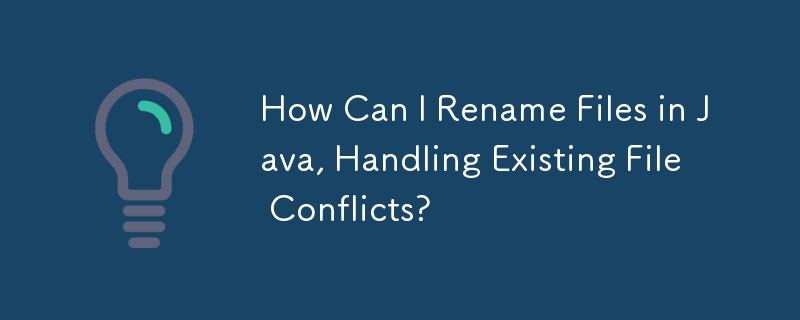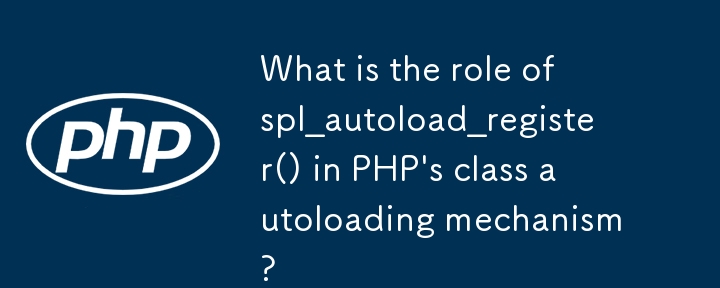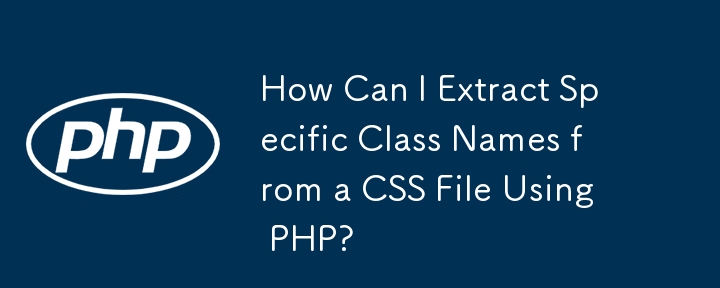Found a total of 10000 related content


In-depth analysis of C language file operation problems
Article Introduction:In-depth analysis of C language file operation problems Preface file operation is an important function in C language programming. However, it can also be a challenging area, especially when dealing with complex file structures. This article will deeply analyze common problems in C language file operation and provide practical cases to clarify solutions. When opening and closing a file, there are two main modes: r (read-only) and w (write-only). To open a file, you can use the fopen() function: FILE*fp=fopen("file.txt","r"); After opening the file, it must be closed after use to free the resource: fclose(fp); Reading and writing data can make
2025-04-04
comment 0
1083

C language file operation: How to close a file?
Article Introduction:C language file operation: How to close a file? Preface file operation is a very important topic in C language. After opening a file, it must be closed to free up system resources and ensure data integrity. This article will guide you how to close files in C language. Syntax To close a file, use the fclose() function. The syntax is as follows: intfclose(FILE*fp); where fp is the file pointer to be closed. Return value The fclose() function returns 0 to indicate successful closing of the file, otherwise it returns EOF (indicating the end file). Practical case: Read the file and close Let's write a C program, read data from the file and display it on the screen. The program also demonstrates
2025-04-04
comment 0
380


C language comprehensive understanding of file operations
Article Introduction:C language provides file operation functions, including opening, closing, reading, writing and moving file pointers. These functions support a variety of operations, such as reading data, writing data, and moving it in a file. Use fopen() and fclose() to open and close files, fread() and fwrite() can be used for data reading and writing, and fseek() allows users to move in files. These functions are widely used in practical applications, such as file copying.
2025-04-04
comment 0
439

How to Use the Symfony Filesystem Component
Article Introduction:This article explores Symfony's Filesystem component, a powerful tool for streamlined file system interactions in PHP applications. We'll cover installation, configuration, and practical examples.
Why Use the Symfony Filesystem Component?
PHP develo
2025-03-01
comment 0
456

What is a file system library in C 17?
Article Introduction:The C 17 file system library provides a unified, type-safe interface, making file and directory operations more intuitive and efficient. 1) The std::filesystem::path class simplifies path operation; 2) The std::filesystem::directory_iterator facilitates traversing directories; 3) Pay attention to exception handling and performance optimization to ensure the robustness and efficiency of the program.
2025-04-28
comment 0
1038

How to Convert Time and Date Across Time Zones in PHP?
Article Introduction:This article presents a PHP class for time zone conversions, addressing the need to manipulate and convert timestamps across different time zones. It covers GMT time offset retrieval, Daylight Saving Time considerations, and provides a practical impl
2024-10-23
comment 0
1064

How to Extract Specific CSS Classes with PHP?
Article Introduction:Parsing CSS with PHP for Selective Class ExtractionIn this article, we aim to tackle the challenge of parsing a CSS file and extracting specific...
2024-11-15
comment 0
966

A Tour of PHP.INI
Article Introduction:Detailed explanation of PHP.ini file: The key to controlling PHP operation
The PHP.ini file is the core configuration file of the PHP server. It controls various parameter settings during PHP runtime, such as uploading directories, error logs, maximum script execution time, and file upload size limit. After modifying this file, you need to restart the server before the changes can take effect.
php.ini file location:
The location of the php.ini file varies depending on the server and how PHP is installed. You can use the phpinfo() function to find its location.
Key settings:
This article will focus on some important php.ini settings:
engine = On: Enable or disable the PHP engine. Setting it to Off will completely
2025-03-02
comment 0
912

How to move or rename a file in Linux?
Article Introduction:In Linux, the mv command is used to move or rename files. When moving the file, use "mv source path target path", such as "mvfilename.txt/home/user/documents/". If the target file already exists, it will be overwritten by default, and if the target path does not exist, an error will be reported. To rename a file, you need to execute "mv source file target file" in the same directory, such as "mvoldname.txtnewname.txt" and if the target file exists, the content will be overwritten. Practical options include: -i (interactive confirmation override), -v (display operation process), -u (move only if the source file is updated or the target does not exist). In addition, alias settings may affect mv behavior, and "aliasmv" can be used
2025-07-24
comment 0
124

What is the role of spl_autoload_register() in PHP's class autoloading mechanism?
Article Introduction:spl_autoload_register() is a core function used in PHP to implement automatic class loading. It allows developers to define one or more callback functions. When a program tries to use undefined classes, PHP will automatically call these functions to load the corresponding class file. Its main function is to avoid manually introducing class files and improve code organization and maintainability. Use method is to define a function that receives the class name as a parameter, and register the function through spl_autoload_register(), such as functionmyAutoloader($class){require_once'classes/'.$class.'.php';}spl_
2025-06-09
comment 0
381

Hassle-Free Filesystem Operations during Testing? Yes Please!
Article Introduction:Virtual File System (VFS) simulates file system operations in unit tests, avoiding the hassle of cleaning temporary files. This article describes how to use the vfsStream library to simplify the testing of file system operations in PHP unit tests.
First, we have a simple FileCreator class for creating files:
2025-02-14
comment 0
497

Magic Methods and Predefined Constants in PHP
Article Introduction:Core points
PHP provides predefined constants and magic methods to enhance code functionality. Predefined constants provide read-only information about code and PHP, while magic methods are names reserved in the class to enable special PHP features.
Predefined constants (all capital letters enclosed with double underscores) provide information about the code. Examples include __LINE__ (returns the line number in the source file), __FILE__ (represents the file name, including its full path), __DIR__ (represents the file path only), __CLASS__ (returns the name of the current class), __FUNCTION__ (returns the name of the current function), __METHOD__ (represents the name of the current method), and
2025-02-28
comment 0
1211

Understanding Autoloading in PHP: How to Implement and Use It Efficiently
Article Introduction:Autoloading in PHP: Concept and Implementation
Autoloading is a mechanism in PHP that automatically loads classes when they are needed, without requiring an explicit include or require statement for each class file. It helps streamline code org
2025-01-01
comment 0
693

How do I configure classmap autoloading in my composer.json file?
Article Introduction:To configure the automatic loading of Composer's classmap, first use the "classmap" key under "autoload" in composer.json to specify the directory or file. For example: {"autoload":{"classmap":["lib/","database/models/"]}}, Composer will scan the .php file in these paths and generate class maps. You can also specify a single file such as legacy_class.php. renew
2025-07-14
comment 0
743



















